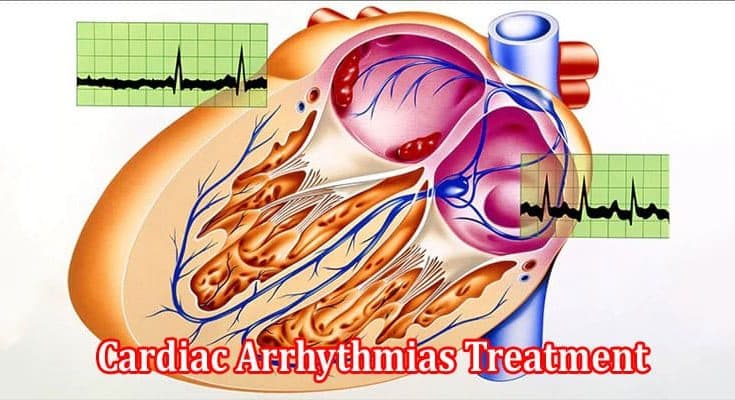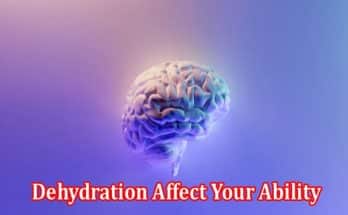Cardiac arrhythmias are abnormal heart rhythms that seriously affect an individual’s health and well-being. They occur when the electrical impulses that control the heartbeat become irregular. This causes the heart to beat too quickly, too slowly, or irregularly. This article discusses cardiac arrhythmias and explores the various options for Cardiac Arrhythmias Treatment.
Understanding Cardiac Arrhythmias
The heart has its natural pacemaker called the sinoatrial (SA) node, which generates electrical signals. These signals travel through the heart’s chambers. It causes them to contract in a coordinated manner and pump blood effectively. Cardiac arrhythmias occur when there are disruptions in this electrical signalling system. They fall into two main categories:
Atrial Arrhythmias
Atrial arrhythmias originate in the atria – the heart’s upper chambers. They include conditions like atrial fibrillation (AFib) and atrial flutter. These arrhythmias often result in a rapid and irregular heartbeat.
Ventricular Arrhythmias
Ventricular arrhythmias originate in the heart’s lower chambers – the ventricles. Conditions like ventricular tachycardia (VT) and ventricular fibrillation (VFib) are examples of ventricular arrhythmias. They can be life-threatening and cause the heart to beat too fast or irregularly.
Diagnosis and Assessment
This process involves several technical steps:
Electrocardiogram (ECG)
An ECG is a primary diagnostic tool to record the heart’s electrical activity. It provides valuable information about the type and severity of the arrhythmia.
Holter Monitor
For intermittent arrhythmias, a Holter monitor records the heart’s activity over an extended period. This is typically 24-48 hours. This helps in capturing irregularities that may not appear during a short ECG.
Electrophysiology Study (EPS)
An EPS involves a catheter insertion into the heart to assess its electrical activity. It helps locate the source of the arrhythmia and guides treatment decisions.
Non-Pharmacological Treatment Options
Several non-pharmacological approaches are used to manage cardiac arrhythmias. However, this depends on the type and severity of the condition:
Catheter Ablation
Catheter ablation is a medical procedure that doesn’t require big surgeries. Instead, doctors use a thin tube called a catheter that has a special tip with electricity. They put this catheter into your heart to fix problems with its rhythm. This procedure helps make your heart beat normally again. It has a high success rate for certain arrhythmias.
Implantable Cardioverter-Defibrillator (ICD)
Patients with life-threatening ventricular arrhythmias require an ICD to be implanted. This device keeps an eye on how your heart is beating. If it notices a dangerous irregular heartbeat, it gives a small electric shock to your heart to make it beat normally again.
Pacemaker
A pacemaker is implanted under the skin that helps regulate the heart’s rhythm. It is commonly used for bradycardia (slow heartbeat) and certain types of atrial arrhythmias.
Cardiac Resynchronization Therapy (CRT)
CRT is used for patients with heart failure and specific types of arrhythmias. It involves implanting a special pacemaker that coordinates the contractions of both ventricles. Ultimately, it improves the heart’s pumping ability.
Pharmacological Treatment
Medications are often a crucial part of arrhythmia management. They can help control heart rate rhythm and reduce the risk of complications. Some commonly used medications include:
Antiarrhythmic Drugs
These drugs are designed to suppress or control abnormal heart rhythms. They are prescribed based on the type of arrhythmia and the patient’s overall health.
Beta-Blockers
Beta-blockers slow down the heart rate and reduce the force of contraction. They are commonly used for conditions like atrial fibrillation.
Calcium Channel Blockers
These drugs help regulate the heart’s electrical activity and are often used to treat supraventricular arrhythmias.
Cardiac arrhythmias are complex conditions that require careful diagnosis and tailored treatment approaches. The choice of Cardiac Arrhythmias Treatment depends on the type of arrhythmia, its severity, and the patient’s overall health. Whether through non-pharmacological interventions, medications, or surgical procedures, the objective is a restoration of normal heart rhythm and an improved quality of life.

Caroline is a dedicated writer with a passion for keeping readers informed. Specializing in providing the latest news updates and unbiased reviews, she strives to deliver accurate and insightful content. With a keen eye for detail and a commitment to journalistic integrity, Caroline ensures that her readers are always well-informed. Stay tuned for her latest articles to stay up-to-date on current events and trends.




